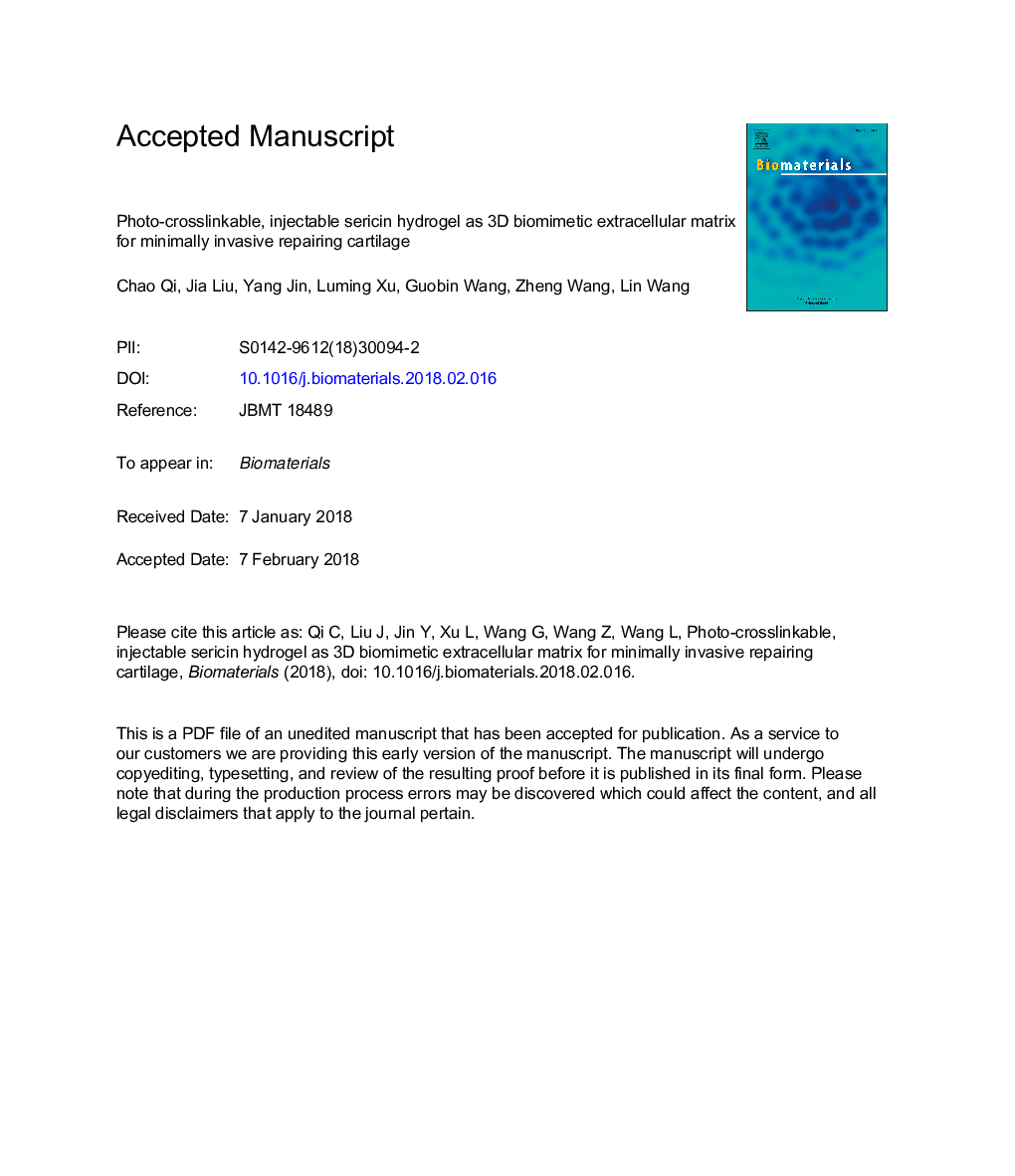| Article ID | Journal | Published Year | Pages | File Type |
|---|---|---|---|---|
| 6484592 | Biomaterials | 2018 | 41 Pages |
Abstract
Millions of patients worldwide suffer from cartilage injury and age/disease-related cartilage degeneration. However, cartilage, such as articular cartilage, is poor at self-regeneration. Current treatments are often invasive with limited efficacy. Developing minimal invasive strategies for effective cartilage repair is highly desired. Here, we report an injectable, photo-crosslinkable sericin hydrogel as a biomimetic extracellular matrix for minimal invasively repairing cartilage. Sericin was functionalized to be sericin methacryloyl (SerMA), which formed an in situ hydrogel upon UV light irradiation via photo-crosslinking. Possessing excellent biocompatibility, SerMA hydrogels were adhesive to chondrocytes, and promoted the proliferation of attached chondrocytes even in a nutrition-lacking condition. SerMA hydrogels exhibited photoluminescent property allowing real-time monitoring hydrogels' status. The mechanical properties and degradation rates (73% for SMH-1, 47% for SMH-2 and 37% for SMH-3 after 45 days) of SerMA hydrogels were readily tunable by varying methacryloyl modification degrees to meet various repair requirements. Notably, the in vivo implantation of chondrocyte-laden SerMA hydrogels effectively formed artificial cartilages after 8 weeks. Most importantly, the artificial cartilages molecularly resembled native cartilage as evidenced by high accumulation of cartilage-specific ECM components and upregulated expression of cartilage-critical genes. Together, this sericin hydrogel is a promising tissue engineering scaffold for generating artificial cartilage in vivo towards effective, minimal invasive cartilage repair.
Related Topics
Physical Sciences and Engineering
Chemical Engineering
Bioengineering
Authors
Chao Qi, Jia Liu, Yang Jin, Luming Xu, Guobin Wang, Zheng Wang, Lin Wang,
